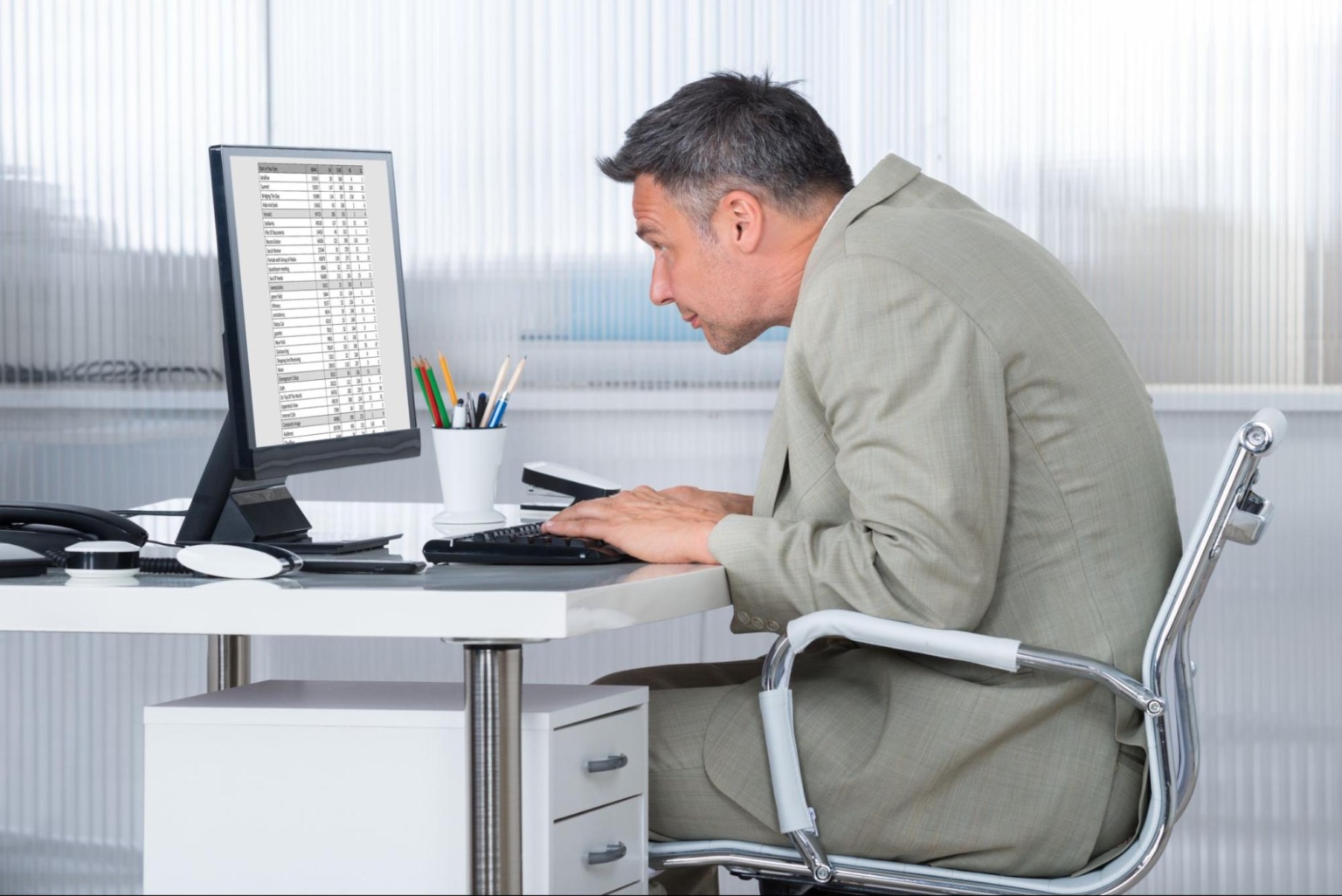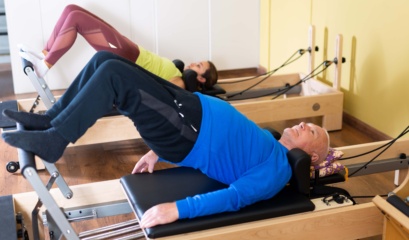Forward head posture is a very common concern and one that we see often in our physiotherapy clinics. It’s especially common nowadays as we spend so much of our lives hunched over a computer or staring down at our phone screens with our head tilted down and our neck stretched forward. This small habit can have quite severe consequences, particularly on the cervical spine (the upper part of your spine that goes into your neck), and it can even contribute to cervicogenic headaches (neck pain headaches) – a certain type of headache caused by excess strain placed on the neck.
As experienced physiotherapists, we’ve seen many patients with forward head posture and other postural complaints, so we know exactly how to fix them!
What is Forward Head Posture?

Forward head posture, commonly known as “text neck” or “computer neck,” occurs when the head sticks forward and places strain on the neck and upper back. Ideally, the head should sit directly above the shoulders. But with prolonged periods of looking down at screens or slouching, this balance is disrupted. This misalignment can lead to a whole host of issues and can be difficult to fix without addressing the underlying causes.
The Modern Lifestyle: Primary Cause of Forward Head Posture
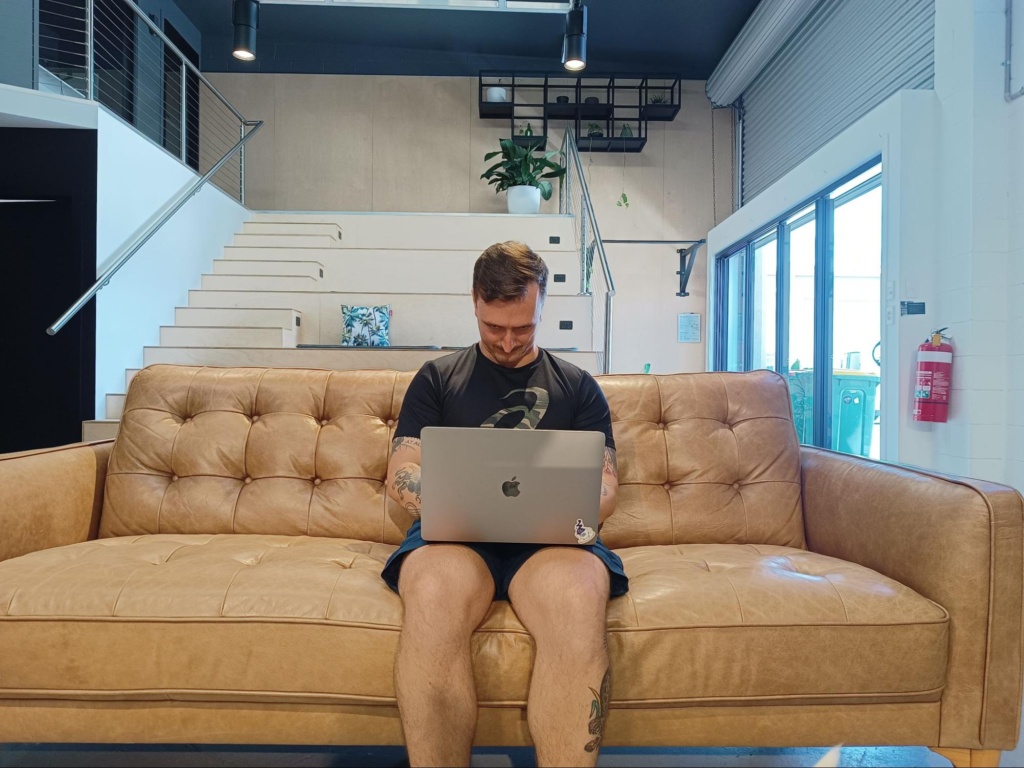
The main culprit behind forward head posture is our modern lifestyle. Endless hours spent hunched over desks, staring down at smartphones, and a lack of awareness about maintaining proper posture all contribute to the development of this condition. Over time, the muscles in the neck and upper back weaken, and the supporting structures become strained, gradually leading to the forward movement of the head. This means that in order to fix forward head posture, we need to address issues such as whether our work station is set up ergonomically, as well as trying to maintain good posture at all times.
Negative Impacts on the Cervical Spine
The cervical spine, or the neck region of the spine, is where we feel the biggest impact of forward head posture. The misalignment increases the load on the vertebrae, discs, and supporting muscles, potentially causing chronic pain, stiffness, and even reducing the range of motion. As the head moves forward, it places additional stress on the neck’s internal structures, leading to a variety of issues down the track.
Contribution to Headaches
Surprisingly, forward head posture isn’t just a pain in the neck – it can also literally be a major headache. The strain on the cervical spine and associated structures can lead to cervicogenic headaches, characterised by a persistent, dull ache around the head. The constant tension and stress on the muscles can create a cycle of pain that becomes challenging to break without addressing the root causes. However, to aid in alleviating pain in the short term, we outline some exercises to fix forward head posture below.
Exercises to Fix Forward Head Posture
Now, let’s look at a few exercises you can do to fix forward head posture. Incorporating these simple exercises into your daily routine can help reverse the effects of forward head posture and alleviate associated discomfort.
Chin Tucks
Chin tucks strengthen the neck muscles and promote a better alignment of the head.


How to do them:
- Sit upright in a chair or stand with your shoulders relaxed.
- Gently tuck your chin in, as if making a double chin.
- Hold for 5-10 seconds.
- Repeat 10 times. Perform several sets throughout the day.
Neck Flexion Stretch
This stretch can relieve tension in the neck and upper back.

How to do it:
- Sit or stand up straight.
- Slowly lower your chin towards your chest.
- Hold for 15-30 seconds.
- Gently release and repeat. Perform several sets but make sure not to overdo it – stretching too deep or too often can exacerbate the issue.
Upper Trapezius and Levator Scapula Stretch
This is just a fancy name for a basic neck stretch. The upper trapezius/levator scapula stretch is a simple yet effective exercise to relieve tension and tightness in the neck and shoulder area.
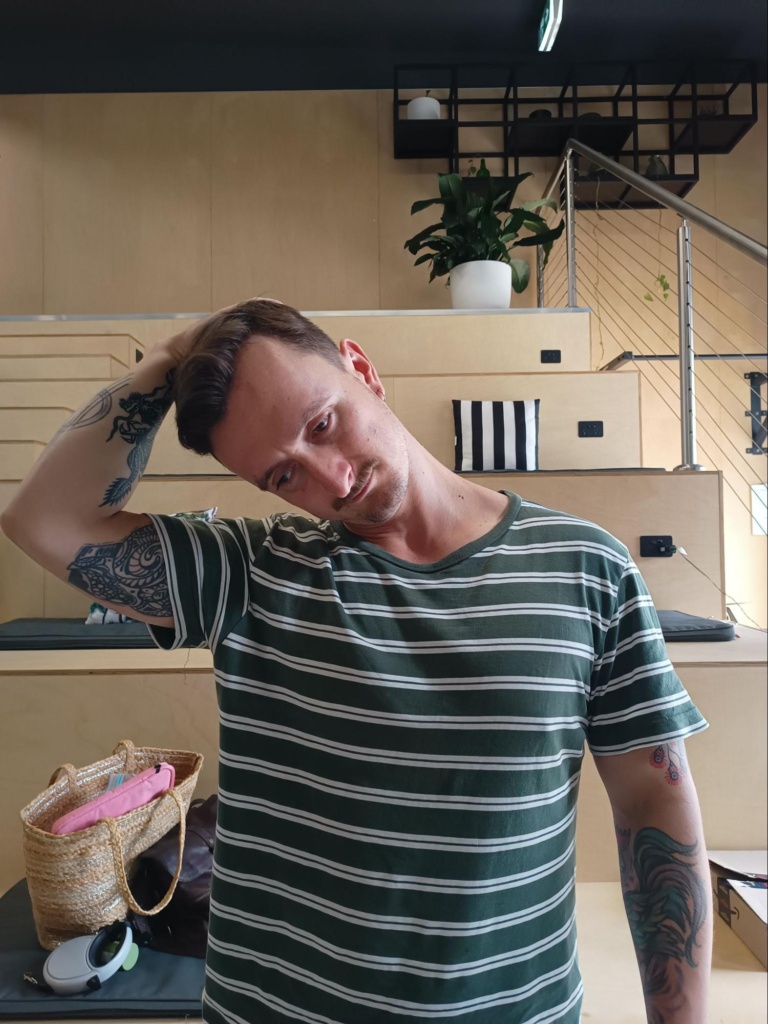
How to do it:
- Sit or stand comfortably with your body relaxed.
- Gently tilt your head to one side, bringing your ear towards the shoulder, while keeping the opposite shoulder still and lowered.
- For a deeper stretch, you can gently place your hand to the back of the head and apply a little extra pressure, ensuring not to strain.
- Hold this position for 20-30 seconds, feeling a stretch on the side of your neck.
- Slowly return to the starting position and repeat on the other side.
- This stretch should be done gently and without forcing the neck into uncomfortable positions. It’s ideal for regular breaks throughout the day, especially for those with desk jobs.
Shoulder Squeezes
The shoulder blade squeeze strengthens the muscles between your shoulder blades, improving forward neck posture.
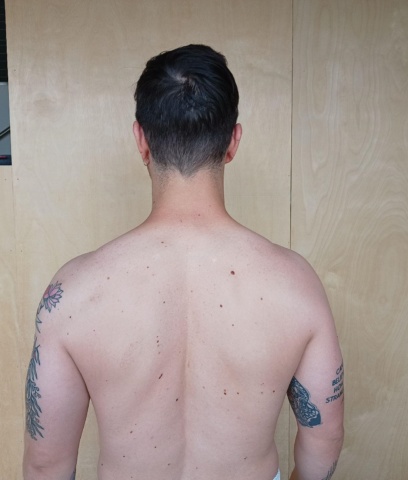

How to do them:
- Stand up straight with your arms at your sides.
- Squeeze your shoulder blades together.
- Hold for 5 seconds and release.
- Repeat 10 times.
Fix Forward Head Posture with Benchmark Physio Today
To fix forward head posture, consistency is key. Regularly practising exercises designed to strengthen the neck and upper back muscles will contribute to realigning the head with the shoulders. Combine this with mindful posture habits to maximise the effectiveness of your efforts.
Remember, a little effort today can go a long way in preserving the health of your neck and alleviating those nagging headaches. If you’re in the Sydney area and need some more help with forward head posture, contact us today, otherwise, why not book an online physiotherapy session?
Disclaimer
Before undertaking any new exercise regimen, it is crucial to consult with a physiotherapist or healthcare professional. Each individual’s condition is unique, and personalised guidance ensures that exercises are suitable for your specific needs and health status.


